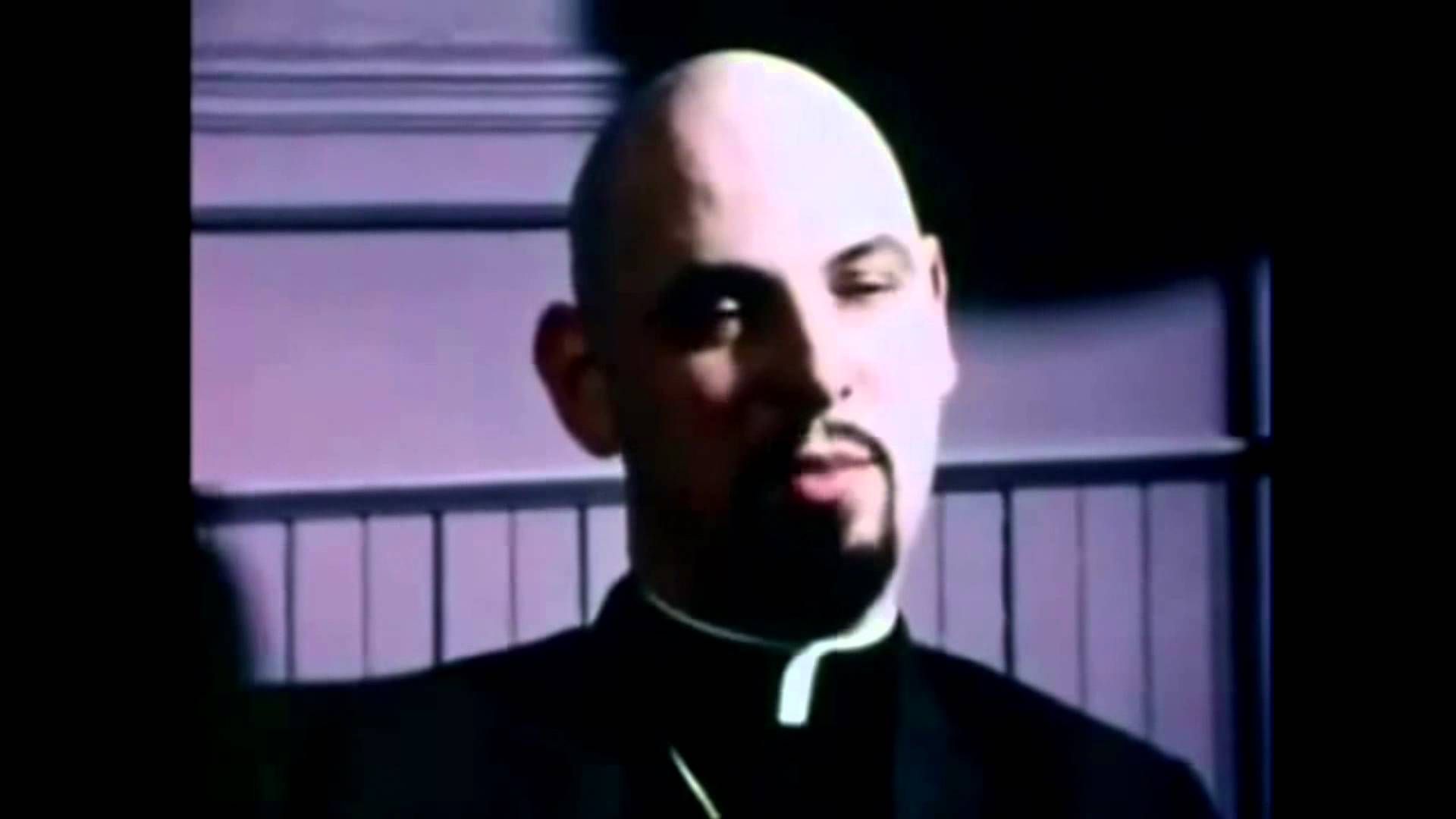Anton Lavey: The Man Behind The Satanic Bible And His Legacy
Anton Lavey, a name that has been both revered and reviled in equal measure, is a figure whose impact on modern Satanism cannot be overstated. Picture this: a guy who decided to flip the script on religion, turning the tables on centuries of dogma and creating something entirely new. He wasn’t just some dude claiming to be the devil’s advocate; he was the architect of a movement that challenged the status quo. Whether you love him or hate him, there’s no denying his influence on religious thought and cultural discourse.
Anton Lavey’s journey wasn’t your typical rags-to-riches story. Instead, it was more like a rollercoaster ride filled with twists, turns, and plenty of controversy. From his early days as a carnival performer to founding the Church of Satan, his life was anything but boring. But why should we care? Well, if you’ve ever wondered about the origins of modern Satanism or the philosophy behind it, Lavey’s story is where you need to start.
Now, before we dive deep into the world of Anton Lavey, let’s set the stage. This isn’t just a history lesson; it’s an exploration of a man who dared to question everything and, in doing so, left an indelible mark on the world. So, buckle up, because we’re about to take a trip through the life, philosophy, and legacy of a guy who truly thought outside the box.
- Karl Urban Relationships The Untold Stories And Fascinating Connections
- Daisy Keech Nudes Unveiling The Truth Behind The Headlines
Who Was Anton Lavey?
Let’s start with the basics, shall we? Anton Lavey wasn’t born with a pitchfork and horns, but he sure did make a name for himself in the world of alternative spirituality. Born Howard Stanton Levey on April 11, 1930, in Chicago, Illinois, his early life was anything but ordinary. Picture a kid growing up in the Windy City during the Great Depression, surrounded by poverty and hardship, but with a mind that was anything but ordinary.
What made Lavey stand out from the crowd? For starters, he had a knack for music, performing in jazz bands and even working as an organist in a strip club. Yeah, you heard that right—a strip club. But don’t let that fool you; this wasn’t just some random gig. It was part of his journey to understanding human nature and the darker side of life, something that would later influence his philosophical views.
Early Life and Influences
So, what shaped the man who would become the face of modern Satanism? Well, Lavey’s early years were filled with a mix of experiences that would later define his worldview. He grew up in a Jewish family, but instead of embracing the religion, he found himself questioning its teachings. This skepticism wasn’t just about religion; it was about everything around him. He wanted to know why things were the way they were and whether there was a better way to live.
- Peter Mcmahon The Man Who Left An Indelible Mark In The World Of Sports
- Yasmine Albustami The Rising Star Shaping The Future Of Tech
One of the biggest influences on Lavey was his time in the carnival world. Imagine a young guy working in a traveling circus, surrounded by freak shows and sideshows, learning about human behavior and the power of spectacle. It was here that he developed a deep understanding of how to captivate an audience, a skill that would come in handy when he founded the Church of Satan.
- Worked as a carnival performer
- Developed an interest in human psychology
- Questioned traditional religious beliefs
Founding the Church of Satan
Now, let’s talk about the big moment in Lavey’s life—the founding of the Church of Satan. On Walpurgisnacht, April 30, 1966, Lavey declared himself the High Priest of Satan and officially established the Church of Satan. This wasn’t just some random act; it was a calculated move to create a space where people could explore the darker aspects of life without fear of judgment.
But what exactly is the Church of Satan all about? Contrary to popular belief, it’s not about worshiping the devil or engaging in evil acts. Instead, it’s about embracing individualism, rejecting traditional religious dogma, and celebrating the self. Lavey believed that people should live according to their own desires and not be bound by outdated moral codes.
The Satanic Bible: A Revolutionary Text
One of the most significant contributions Lavey made to the world was the publication of “The Satanic Bible” in 1969. This book wasn’t just a collection of rituals and spells; it was a manifesto for a new way of thinking. It outlined the Nine Satanic Statements, the Eleven Satanic Rules of the Earth, and the philosophy of Satanism as envisioned by Lavey.
So, why was “The Satanic Bible” such a game-changer? Well, for starters, it challenged the very foundation of traditional religion. It encouraged people to think for themselves, question authority, and embrace their own power. It was like a breath of fresh air in a world dominated by dogma and conformity.
Lavey’s Philosophy and Beliefs
Anton Lavey’s philosophy was all about empowering the individual and rejecting the constraints of traditional religion. He believed that people should live according to their own desires and not be bound by outdated moral codes. In his view, the self was the ultimate authority, and the pursuit of personal happiness was the highest goal.
One of the key tenets of Lavey’s philosophy was the rejection of the concept of good and evil. Instead, he proposed that actions should be judged based on their outcomes and not on some arbitrary moral code. This was a radical departure from traditional religious thought and one that continues to influence modern Satanism today.
Key Principles of Lavey’s Satanism
So, what exactly did Lavey believe in? Here are some of the key principles of his philosophy:
- Rejection of traditional religious dogma
- Emphasis on individualism and personal power
- Celebration of the self and the pursuit of personal happiness
- Rejection of the concept of good and evil
The Impact of Lavey’s Work
Anton Lavey’s impact on modern Satanism and religious thought cannot be overstated. His ideas have influenced countless people around the world, from musicians and artists to philosophers and academics. But what exactly was his legacy?
For starters, Lavey’s work helped to legitimize Satanism as a viable religious alternative. It gave people a space to explore their beliefs without fear of judgment or persecution. It also challenged the status quo and encouraged people to think critically about the world around them.
Cultural Influence and Controversy
Of course, Lavey’s work wasn’t without controversy. Critics accused him of promoting hedonism and nihilism, while supporters praised him for his courage and vision. But regardless of where you stand on the issue, there’s no denying that Lavey’s ideas have had a lasting impact on the world.
His influence can be seen in everything from heavy metal music to contemporary art and literature. He was a guy who dared to question everything and, in doing so, left an indelible mark on the world.
Biography of Anton Lavey
Before we move on, let’s take a moment to look at some key facts about Anton Lavey’s life. Here’s a quick rundown:
| Full Name | Howard Stanton Levey |
|---|---|
| Date of Birth | April 11, 1930 |
| Place of Birth | Chicago, Illinois, USA |
| Profession | Founder of the Church of Satan, author, musician |
| Notable Works | The Satanic Bible, The Satanic Rituals |
Anton Lavey’s Legacy Today
Even after his death in 1997, Anton Lavey’s legacy continues to inspire people around the world. His ideas have influenced countless individuals and organizations, from musicians and artists to philosophers and academics. But what does his legacy mean today?
For many, Lavey’s work represents a call to action—a challenge to question everything and embrace the power of the self. It’s a reminder that we don’t have to accept the status quo and that we have the power to shape our own destinies. In a world that often feels chaotic and uncertain, Lavey’s message of empowerment and self-reliance continues to resonate with people from all walks of life.
Modern Satanism and Its Evolution
Today, modern Satanism continues to evolve, building on the foundation laid by Anton Lavey. It’s a movement that embraces diversity and individuality, encouraging people to think for themselves and reject conformity. It’s a reminder that we don’t have to follow the herd and that we have the power to create our own paths in life.
Conclusion
So, there you have it—the story of Anton Lavey, the man who dared to question everything and, in doing so, left an indelible mark on the world. Whether you love him or hate him, there’s no denying his influence on modern Satanism and religious thought. His ideas continue to inspire people around the world, challenging them to think critically and embrace their own power.
But what can we take away from Lavey’s life and work? For starters, it’s a reminder that we don’t have to accept the status quo. We have the power to question everything, to think for ourselves, and to create our own paths in life. So, the next time you find yourself questioning the world around you, remember Anton Lavey and the legacy he left behind.
And hey, if you’ve enjoyed this article, why not leave a comment or share it with your friends? After all, knowledge is power, and the more we share it, the better off we all are. So, go ahead and spread the word—Anton Lavey’s story is one that everyone should hear!
Table of Contents
- Who Was Anton Lavey?
- Early Life and Influences
- Founding the Church of Satan
- The Satanic Bible: A Revolutionary Text
- Lavey’s Philosophy and Beliefs
- Key Principles of Lavey’s Satanism
- The Impact of Lavey’s Work
- Cultural Influence and Controversy
- Biography of Anton Lavey
- Anton Lavey’s Legacy Today
- Molly Buffington The Rising Star Whos Making Waves In The Entertainment World
- Billie Eilish Girlfriends A Deep Dive Into The World Of Music Relationships And Authenticity

anton LaVey Multiversity Comics

Pictures of Anton LaVey

Pictures of Anton LaVey